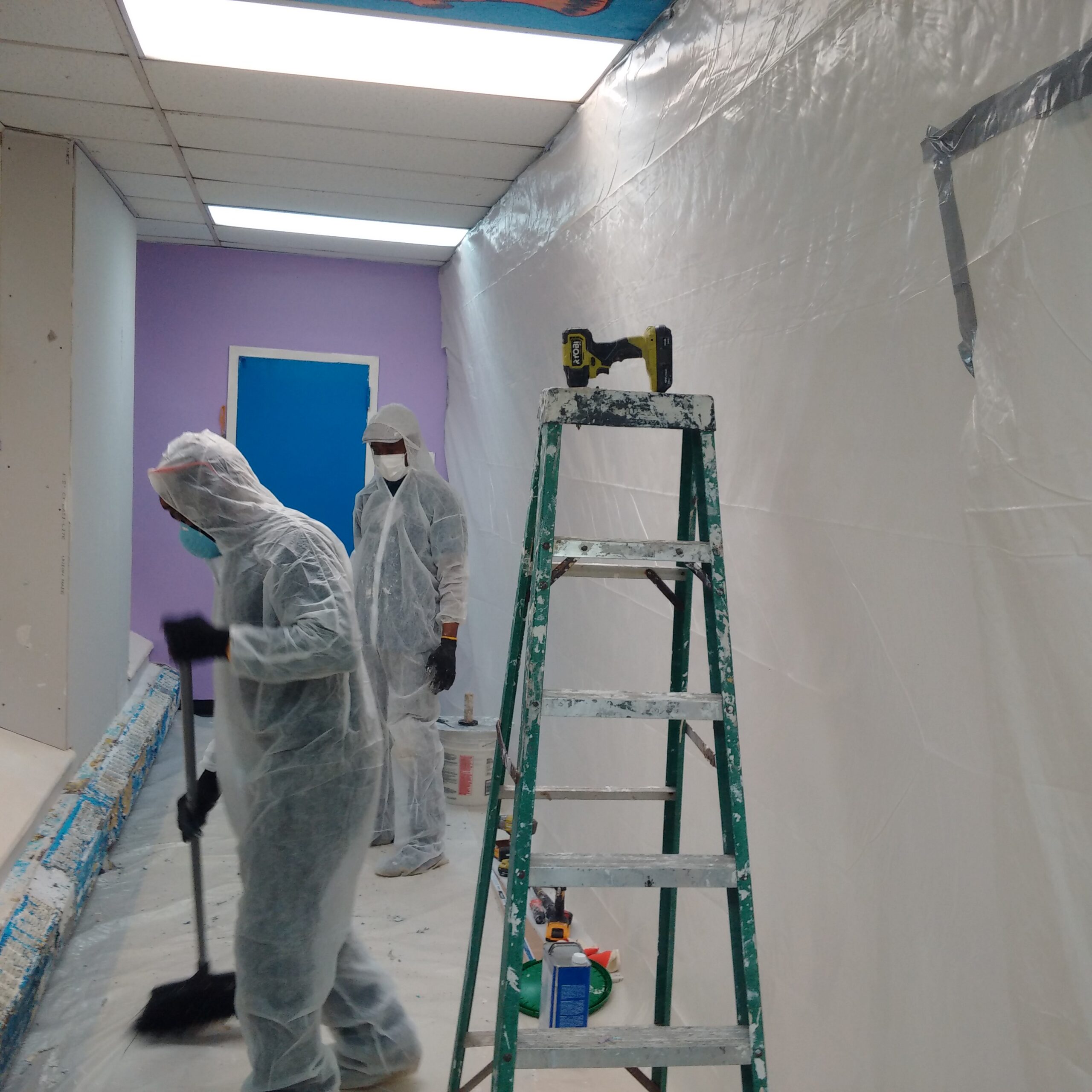Lead Paint Removal Service-- NYC's Trusted Solutions for Lead Security
Lead Paint Removal Service-- NYC's Trusted Solutions for Lead Security
Blog Article
Best Practices for Making Certain Safe and Extensive Lead Offense Abatement
Attending to lead violation abatement needs a multi-faceted method to ensure both security and conformity. Initial assessments making use of innovative detection approaches such as XRF analyzers set the phase for an accurate understanding of contamination degrees. Incorporating appropriate containment strategies, including impermeable obstacles and HEPA filtration, paired with the use of individual protective equipment (PPE) for employees, forms the foundation of a secure operation. Careful cleaning protocols, featuring HEPA vacuuming and wet-wiping, are essential. It's the final clearance procedure, including detailed examinations and laboratory testing, that truly confirms a lead-free environment, guaranteeing long-term safety. How do these practices interconnect to guarantee comprehensive lead abatement?

First Evaluation
Conducting a first evaluation is a crucial first action in lead infraction abatement. This stage encompasses a detailed analysis of the building to determine the visibility, level, and particular places of lead-based hazards. Certified professionals, such as qualified lead inspectors or take the chance of assessors, ought to execute a detailed website inspection, making use of tools like X-ray fluorescence (XRF) analyzers to precisely detect and determine lead concentrations in paint, dust, dirt, and water.
The assessment needs to additionally include a testimonial of the building's background, previous records, and any problems or health problems reported by owners - Lead Removal Contractors. Documenting the searchings for diligently is important, as these documents develop the basis for developing an effective abatement technique. A detailed assessment also involves sampling and laboratory analysis, which are critical to verify the visibility of lead and overview subsequent actions
Additionally, it is important to interact the outcomes transparently to all stakeholders, consisting of residential or commercial property owners, occupants, and governing authorities. By ensuring that the first analysis is performed with precision and roughness, specialists can lay a strong structure for a targeted and reliable lead reduction procedure, ultimately securing public wellness and guaranteeing compliance with regulative requirements.
Appropriate Containment
Correct containment is important to avoid the spread of lead impurities throughout abatement tasks. Successfully managing control lessens the danger of lead dirt and particles migrating to non-work locations, thus safeguarding both the setting and individuals outside the prompt work area.

Normal evaluations of the control location are needed to look for breaches or weak points in the barrier. Any type of identified problems should be immediately addressed to keep the integrity of the control. By adhering to these techniques, abatement projects can successfully regulate lead contamination and reduce associated health and wellness threats.
Worker Security
Ensuring employee security is extremely important during lead abatement tasks to avoid job-related exposure to dangerous lead fragments. Important procedures consist of making use of personal safety equipment (PPE) such as respirators, gloves, and full-body fits go to my site especially designed to obstruct lead dirt and fumes. Employees should undergo detailed training on the proper usage and upkeep of PPE, consisting of in shape screening for respirators to guarantee maximum efficacy.
Design controls, such as regional exhaust ventilation systems, are critical in lessening air-borne lead focus in the workplace. Administrative controls ought to likewise be carried out, consisting of restricting the period of direct exposure and revolving employees to lower private direct exposure times. Normal clinical security and organic tracking are crucial for very early discovery of lead absorption, making it possible for prompt treatment and therapy.
Moreover, establishing a purification method is vital. Workers should follow stringent purification treatments prior to breaks and at the end of their change to stop lead dirt from being brought outside the workplace. This includes comprehensive hand and face washing with lead-specific cleansing representatives and altering out of polluted clothing.
Meticulous Cleaning
Keeping a risk-free workplace expands past worker protection and incorporates careful clean-up to guarantee lead particles are extensively eliminated from the site. The procedure of thorough cleaning is important in protecting against the recontamination of the mellowed out area and guarding both present and future residents.
To attain a detailed cleanup, all workspace have to be methodically sanitized. This includes making use of specialized HEPA (High-Efficiency Particulate Air) vacuum and wet-wiping methods to record and eliminate sites great lead dust that might have decided on surface areas. It is critical to clean up all straight surface areas, including floors, home window sills, and countertops, along with vertical surfaces that might have trapped lead bits.
Workers should put on suitable individual safety equipment (PPE) throughout cleaning to prevent direct exposure to recurring lead dust. Utilized cleansing materials such as wipes, sponges, and mop heads must be dealt with according to contaminated materials disposal guidelines.

Final Clearance
Last clearance is the crucial concluding phase of lead abatement that identifies whether the site is safe for reoccupation. This vital step includes detailed examination and screening to verify that all lead risks have been efficiently eliminated.

Final clearance screening not only secures future residents however also ensures conformity with neighborhood, state, and federal regulations. It serves as a documented recognition of the abatement service provider's adherence to market best techniques. Making sure an extensive and successful last clearance is vital in safeguarding public wellness and promoting count on the reduction process.
Verdict
Guaranteeing secure and extensive lead violation abatement demands a diverse strategy including first evaluations with innovative discovery methods, reliable containment techniques, stringent worker defense procedures, and careful cleaning procedures. The last clearance phase, featuring in-depth evaluations and lab screening, is important to validate compliance with EPA requirements. Adherence to these ideal practices guarantees a risk-free setting for occupants, alleviates wellness threats, and supports regulative needs, thus promoting public health and wellness and security in lead-affected locations.
Report this page